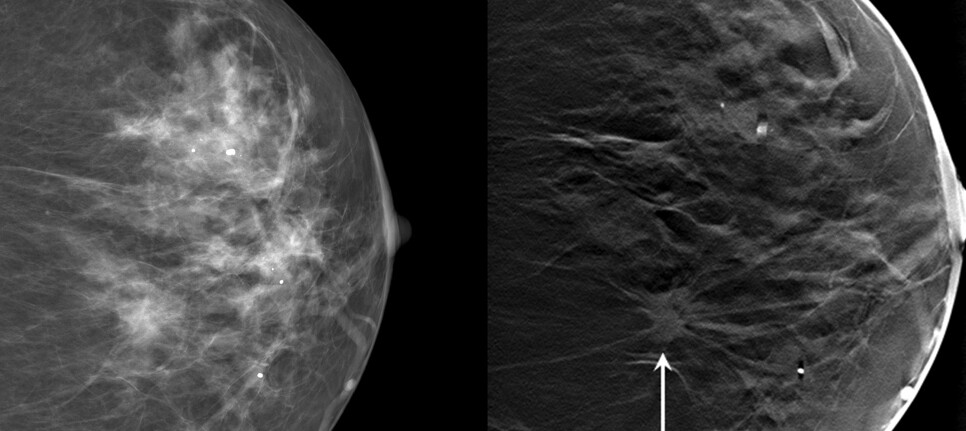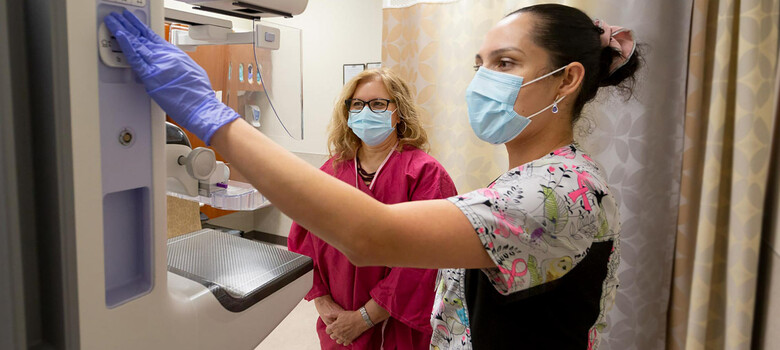What Is 3D Mammography?

Digital breast tomosynthesis (3D mammography), available at all Duke Health mammography locations, is a new diagnostic tool for breast cancer detection. Jay Baker, MD, a breast imaging specialist at Duke Health, explains what 3D mammography is and how it differs from traditional digital mammography.
What Is digital breast tomosynthesis?
Breast tomosynthesis, also called 3D mammography, takes several X-rays, which are combined to form a single 3D image of the breast.
The procedure is not much different than a traditional mammogram. In fact, 3D mammography uses similar equipment, and it requires the same breast compression. “The difference is in how we take the X-rays,” Dr. Baker said. During compression, a camera moves over the breast and takes multiple very low-dose images. The compression is then released. The entire process takes about seven seconds per compression, only slightly longer than before.
Why Is a 3D mammogram better?
“Creating a 3D image of the breast allows us to identify a breast cancer that may be hidden on regular mammography,” explained Dr. Baker. Traditional mammography creates a two-dimensional image, and tissue at the top, middle, and bottom of the breast all overlap on this one image. 3D mammography creates a series of imaging slices at different levels of the breast. This allows breast imaging specialists to view each slice and detect breast cancer that can be hidden where the tissue overlaps on a 2D image. In addition, the 3D system can use the information it collects to make a 2D “synthetic” mammogram image with no need for additional radiation. In some cases, this 2D image can be helpful for interpreting 3D images.
What are other benefits of a 3D mammogram?
Breast cancer can be seen far more clearly with tomosynthesis than with regular 2D digital mammography. Several large studies confirm that tomosynthesis is 25 to 35% better at detecting breast cancer than traditional digital mammography. At the same time, it results in up to 30% fewer unnecessary callbacks. This means fewer people are asked to return for additional testing. It’s one of those rare win-wins, said Dr. Baker. “Usually when you find more cancer, you find more benign things also. That can cause a lot of anxiety and concern that we can now avoid.”
Who should get 3D mammography?
Anyone who needs screening mammograms will benefit from 3D mammograms. “That’s why Duke uses 3D mammograms 100% of the time when we are looking to see if breast cancer is present in someone who has no symptoms of breast cancer,” Dr. Baker said. 3D mammograms are particularly useful in people with denser breast tissue, which is more difficult to read on traditional mammography.



